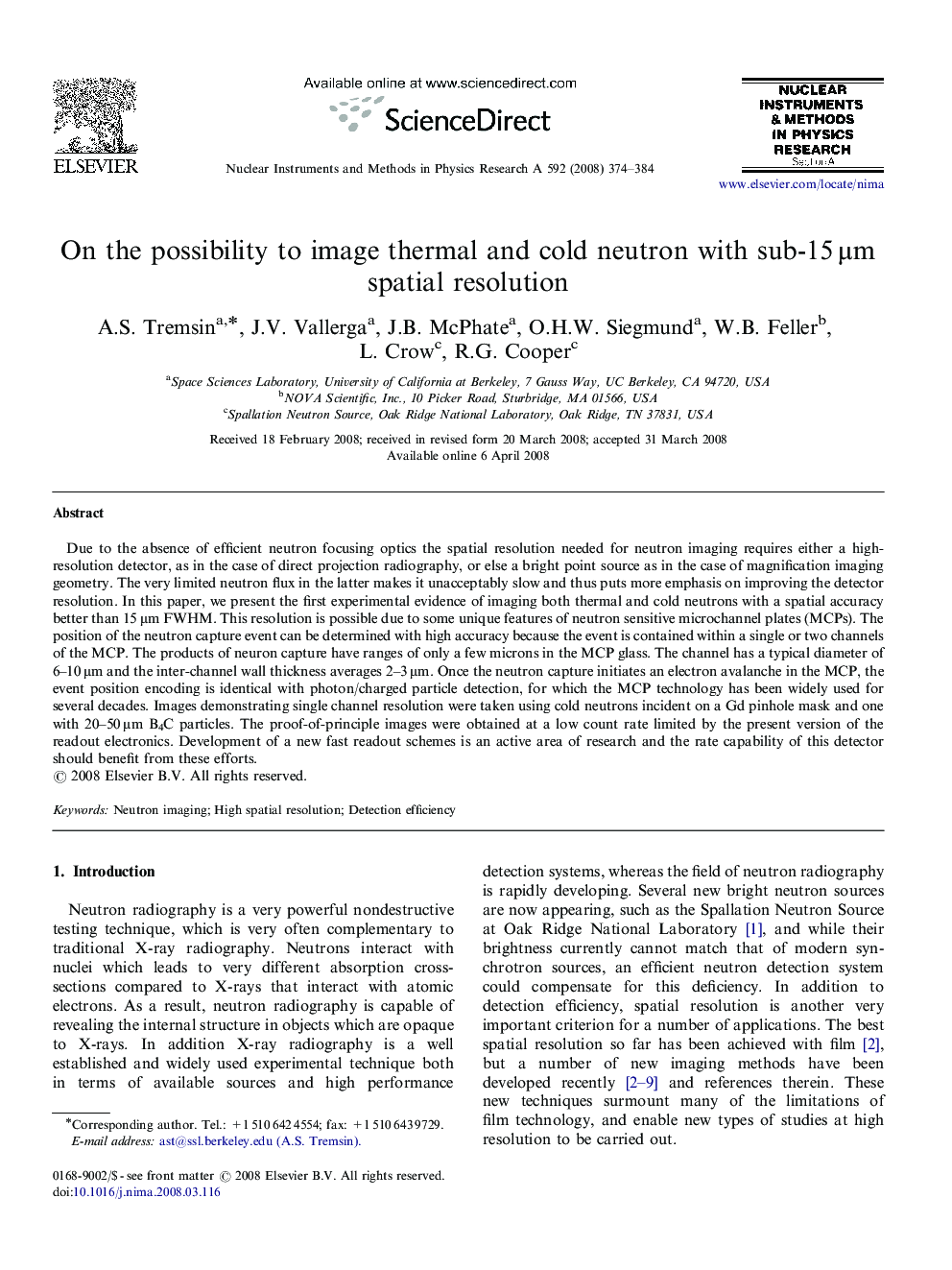| Article ID | Journal | Published Year | Pages | File Type |
|---|---|---|---|---|
| 1829236 | Nuclear Instruments and Methods in Physics Research Section A: Accelerators, Spectrometers, Detectors and Associated Equipment | 2008 | 11 Pages |
Abstract
Due to the absence of efficient neutron focusing optics the spatial resolution needed for neutron imaging requires either a high-resolution detector, as in the case of direct projection radiography, or else a bright point source as in the case of magnification imaging geometry. The very limited neutron flux in the latter makes it unacceptably slow and thus puts more emphasis on improving the detector resolution. In this paper, we present the first experimental evidence of imaging both thermal and cold neutrons with a spatial accuracy better than 15 μm FWHM. This resolution is possible due to some unique features of neutron sensitive microchannel plates (MCPs). The position of the neutron capture event can be determined with high accuracy because the event is contained within a single or two channels of the MCP. The products of neuron capture have ranges of only a few microns in the MCP glass. The channel has a typical diameter of 6-10 μm and the inter-channel wall thickness averages 2-3 μm. Once the neutron capture initiates an electron avalanche in the MCP, the event position encoding is identical with photon/charged particle detection, for which the MCP technology has been widely used for several decades. Images demonstrating single channel resolution were taken using cold neutrons incident on a Gd pinhole mask and one with 20-50 μm B4C particles. The proof-of-principle images were obtained at a low count rate limited by the present version of the readout electronics. Development of a new fast readout schemes is an active area of research and the rate capability of this detector should benefit from these efforts.
Related Topics
Physical Sciences and Engineering
Physics and Astronomy
Instrumentation
Authors
A.S. Tremsin, J.V. Vallerga, J.B. McPhate, O.H.W. Siegmund, W.B. Feller, L. Crow, R.G. Cooper,
